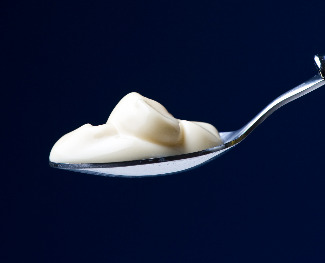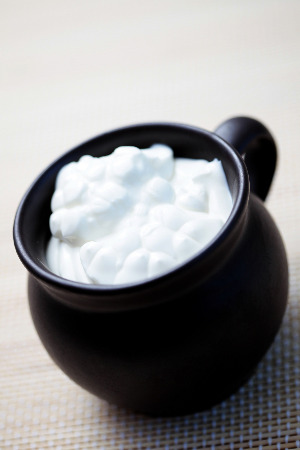|
Yogurt Cultures
Yogurt cultures are good bacteria that are found in yogurt. When shopping for yogurt, you should always check the label to ensure there are at least some live active yogurt cultures included. Also referred to as Probiotics, which literally means pro-life, (for-life), probiotics are live bacteria that are actually good for your health if eaten in the right amounts. Your large intestine needs these “good” bacteria to function. These good yogurt bacteria boost our immune system, which then helps the rest of our body function properly, helps prevent illnesses and ward off infections. It is important to eat your yogurt fresh. Live cultures are measured in organisms. A typical daily dose would provide about 3-5 billion live organisms.
Our intestines and the whole digestive tract have billions of bacteria and yeasts living in it. There are good bacteria, the probiotics, and there are some bad bacteria there too. The probiotic bacteria help your body function properly. When you are taking a regular intake of probiotics, in the form of yogurt, they keep everything in balance, which prevents illnesses and infections. There are many things that can kill off these good bacteria. The benefits of eating yogurt regularly help to prevent this. So, what can kill or deplete the good bacteria and disturb this delicate balance;
If you are taking antibiotics or have any of these symptoms, it is important to take a daily dose of probiotics, the best form being yogurt.
There are 5 main cultures found in yogurt;
What role do these cultures play?
There are 300 recipes from all over the world, appetizers, dips, breakfasts, snacks, lunch and dinner meals, everyday and dinner party fare, and so many delicious desserts! There is no better book than this, and with a budget pricetag, you can buy for yourself, or as a great gift for someone who loves food. Here are some pages you may enjoy about Yogurt!
Return from Yogurt Cultures to find more pages on Greek Yogurt
|
Follow us on Facebook
Make your own yogurt at home with this great yogurt maker!
Don't be deceived by the price, this is the best book of Yogurt you will ever find, 300 recipes, plus the history and how to make your own yogurt.

Not Just Cheesecake – A Yogurt Cheese Cookbook
Make delicious dips, ice-creams, desserts and much more using your freshly strained yogurt cheese. Great for those on reduced fat or health conscious diets.










New! Comments
Have your say about what you just read! Leave me a comment in the box below.